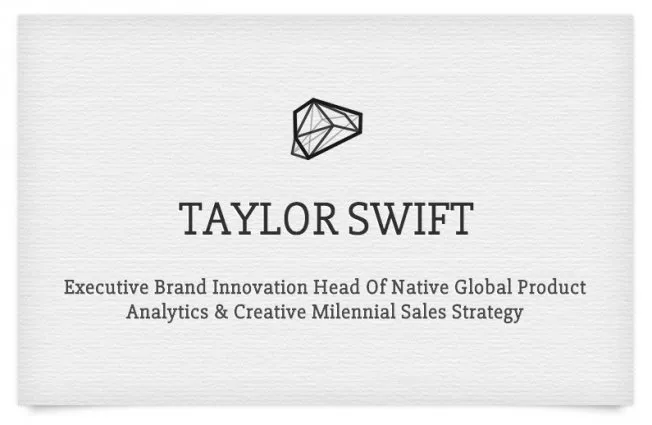Your company probably uses the word “innovation” frequently in its marketing materials. It’s become a cliché to proclaim that innovation is important, or even central to your business process, and there’s little debate as to why - innovation sounds sexy, and as a result, it is polluting the recruitment process.
I recently visited the recruitment booth of a major media corporation at a job fair. The word INNOVATION was written across the table drape in foot-high letters, and the company’s name was tucked into the corner.
“Are you hiring for innovation?” I asked.
“What do you mean?” replied the recruiter.
“Well, I’m an innovation manager, and you’ve got the word innovation written in big letters here – can you tell me about your innovation team?”
“We don’t really do the innovation part - I think we use a consultancy for that,” she said.
While I’m sure she was uninformed to some degree, it’s telling that she didn’t even know if her company had any formal innovation team. Is that how the word innovation is used at your company? How you write your job titles and descriptions speaks volumes. Here are the Three Innovation Sins you may be committing with your postings:
1.) Appending the *word* Innovation to a job title to sound edgier
We can agree that all employees should probably surface well-reasoned ideas for business improvements to their managers, and if your business culture doesn’t encourage that type of communication, you may have bigger problems than with your job postings. With that said, I submit that adding the word Innovation to a job title does not an innovator make. Is there really a difference between a Marketing Manager and Marketing Innovation Manager? I suspect that the difference there is more on the business card than in the business itself.

I recently saw a job opening at a prestigious firm on Wall Street for an Innovation Program Manager. It sounded like that person would run the innovation program, but in fact, it was for an executive administrative assistant for the Chief Innovation Officer. Are you tarting up your job titles to the point of confusion?
2.) Appending the *job* of Innovation to an existing position
As I alluded before, innovation should be every employee’s responsibility, but what if you simply attach the oversight of the innovation program to an individual who has another primary responsibility? Adding the management of the innovation process to their workload could become a distraction from that job. Frequently, this job is assumed by a senior executive with little time to devote to managing the day-to-day details like running idea campaigns, using the innovation funnel, or connecting idea creators with subject matter experts. This manager may delegate the innovation responsibilities to their direct reports without clear direction or support.

Even if they had the time to devote to the process, are they trained or knowledgeable about innovation? Have they run innovation teams in the past? Worst of all, if they cannot devote the necessary time, or lack the skills to manage the process, any failures of the innovation initiative may be attributed to the innovation program itself, effectively killing innovation at your company for years to come.
3.) Creating an innovation-stifling monoculture by killing diversity.
A particularly hot topic in talent acquisition today is “diversity.” You probably work hard to improve your company’s diversity by hiring people with various race, gender, or ethnic backgrounds, but when it comes to experience, you keep drawing water from the same industry-vertical well. Diversity comes in two main flavors: Inherent diversity involves traits you are born with, such as gender, ethnicity, and sexual orientation. Acquired diversity is attained through experiences, like education, occupation, and economic backgrounds.[1]
Most Innovation job postings typically require 3-15 years of experience in the same field as the rest of your employees, but in the realm of innovation, field-specific requirements can blunt or block disruptive ideation and exploration. Breakthrough innovations are more likely to be found via cross-pollination[2] - drawing insights from multiple verticals and industries.

For example, in 2014, the H1N1 outbreak was eventually contained by epidemiologists using zip code-level predictive analytics that were created by an energy company to monitor and prevent customer attrition. The clustering found in the attrition data proved to be highly similar to disease clustering, which had previously been analyzed only at country and state levels. Creating and maintaining an innovation culture will continue to be a key success factor for business in the coming decades, so we should recruit and hire with that future in mind.
So what are the solutions?
- Assume innovation as a business competency – Management should make it clear that all employees are responsible for continuous improvement and providing creative solutions to business problems. Employees that are averse to change, or are too comfortable with the status quo could be holding your company back. Keep the word “Innovation” out of your job titles, unless innovation is their primary role.
- Hire and train for innovation – the old “suggestion box” just won’t cut it anymore. Innovation takes a full-company commitment in the form of hiring, training, and especially executive endorsement. Use dedicated managers to shepherd the innovation process, not overburdened executives.
- Hire for diversity – Divergent ideas and experiences need to come from your staff, so mix it up. Employees at companies with inherent and acquired diversity are 45% likelier to report that their firm’s market share grew over the previous year, and 70% likelier to report that the firm captured a new market.[3]
[1] Hewlett, Sylvia Ann, Melinda Marshall, and Laura Sherbin. "How Diversity Can Drive Innovation." Harvard Business Review. Harvard Business Publishing: Higher Education, 31 July 2014. Web. 05 Oct. 2016.
[2] Lee Fleming. "Perfecting Cross-Pollination." Harvard Business Review. Harvard Business Publishing: Higher Education., 31 July 2014. Web. 04 Oct. 2016.
[3] Hewlett, Sylvia Ann, Melinda Marshall, and Laura Sherbin. "How Diversity Can Drive Innovation." Harvard Business Review. Harvard Business Publishing: Higher Education, 31 July 2014. Web. 05 Oct. 2016.